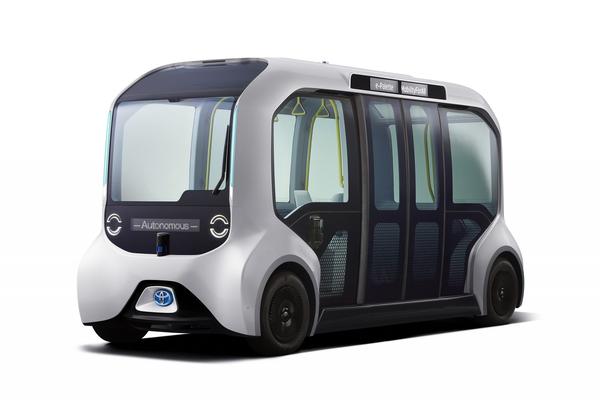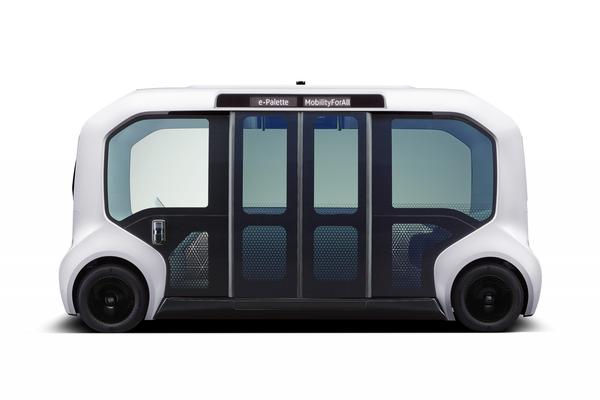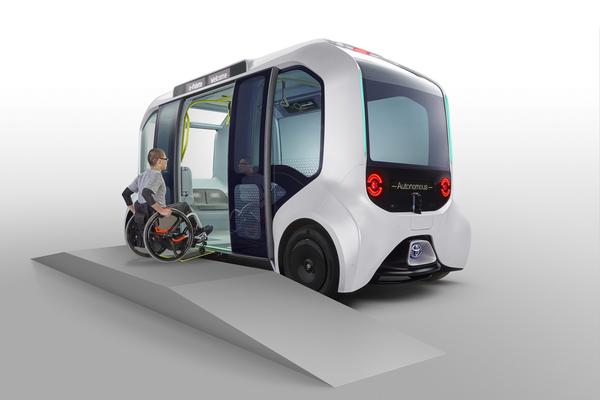News
Hop aboard the coolest tech at the Olympics 2020
All Olympic and Paralympic games feature some cool technology, and this year was no different. E-Palettes are built specially for the athletes – find out what they are and know more about their features.


Words by: Nimisha Jain
Published on 13 August 2021 | 0 min read
One of the unexpected stars of the 2021 Olympics was Toyota’s self-driving shuttle. Now that the Olympics are over, will we see them again?
You may have noticed athletes being ferried around the Olympic village in box-shaped, futuristic-looking buses – these are Toyota’s e-Palettes. As one of the top sponsors of the Games, Toyota provided upgraded e-Palettes for the Tokyo Olympics and Paralympics 2020.
You may have noticed athletes being ferried around the Olympic village in box-shaped, futuristic-looking buses – these are Toyota’s e-Palettes. As one of the top sponsors of the Games, Toyota provided upgraded e-Palettes for the Tokyo Olympics and Paralympics 2020.

What’s so great about the e-Palette is that not only is it a battery electric vehicle with a range of about 93 miles (keeping in theme with sustainability at the Games), but it’s also an automated vehicle i.e. it is self-driving.
The driverless minibus uses level four automation technology, which means it can perform all driving tasks itself under specific conditions. In total there are six levels of driverless technology created by the SAE International. You can find out more about these levels here. While SAE level four doesn’t require any human interaction, the e-Palettes at the Olympics had an operator onboard for safety and to monitor the self-driving shuttle. Other safety measures include capping the speed of the shuttle to around 12 mph and fitting the e-Palette with Toyota’s Safety Sense technology which includes lane assist and detection of road signs, vehicles and pedestrians around the e-Palette. There’s still a lot of confusion between self-driving and driverless cars, their safety, which cars are currently self-driving and how to insure such cars. We’ve created a bespoke guide on self-driving cars to provide more clarity on what these terms mean.
The driverless minibus uses level four automation technology, which means it can perform all driving tasks itself under specific conditions. In total there are six levels of driverless technology created by the SAE International. You can find out more about these levels here. While SAE level four doesn’t require any human interaction, the e-Palettes at the Olympics had an operator onboard for safety and to monitor the self-driving shuttle. Other safety measures include capping the speed of the shuttle to around 12 mph and fitting the e-Palette with Toyota’s Safety Sense technology which includes lane assist and detection of road signs, vehicles and pedestrians around the e-Palette. There’s still a lot of confusion between self-driving and driverless cars, their safety, which cars are currently self-driving and how to insure such cars. We’ve created a bespoke guide on self-driving cars to provide more clarity on what these terms mean.
Toyota e-Palette: Tokyo 2020 version
The Olympics version of the e-Palettes was carefully designed, keeping in mind the needs of the athletes, especially at the Paralympics.
The minibuses have large doors and low floors with electric ramps for improved accessibility, inside the bus there are handrails and seats for a comfortable journey around the village and contrasting colours have been used on the interiors and exteriors to support those suffering from colour-blindness. The multi-passenger shuttle follows a pre-set route and can carry up to 19 athletes and officials at once, with the 20th passenger being the operator or accommodate four passengers in a wheelchair along with seven others standing. There are always at least 12 such shuttles operating round-the-clock to get the players back and forth from the village to the venues.
The minibuses have large doors and low floors with electric ramps for improved accessibility, inside the bus there are handrails and seats for a comfortable journey around the village and contrasting colours have been used on the interiors and exteriors to support those suffering from colour-blindness. The multi-passenger shuttle follows a pre-set route and can carry up to 19 athletes and officials at once, with the 20th passenger being the operator or accommodate four passengers in a wheelchair along with seven others standing. There are always at least 12 such shuttles operating round-the-clock to get the players back and forth from the village to the venues.

Self-driving technology: are these cars available yet?
The Games presented Toyota with a great opportunity to test and trial the e-Palette’s real-life application, to commercialise the technology in the near future.
In April 2021, the Department for Transport (DfT) announced that the UK could see self-driving tech being used for the first time on the road by the end of 2021. Currently, the plan is to start by allowing vehicles to legally use Automated Lane Keeping Systems (ALKS), a technology capable of self-driving the vehicle in a single lane and return control to the driver when needed. Cars using ALKS technology will still need to receive GB type approval and prove that there’s no challenge to the vehicle’s ability to self-drive to be listed under the Automated and Electric Vehicles Act 2018 (AEVA). Related: Self-driving cars on UK motorways in 2021 It’s hoped that self-driving technology will revolutionise transportation in the UK by increasing road safety and reducing emissions and road congestion. It’s predicted that in 10 years’ time, "automated driving systems could prevent 47,000 serious accidents and save 3,900 lives", as per the SMMT Chief Executive, Mike Hawes. It will also help create jobs in the professional, technical and skilled trade sectors. The government is also looking at making changes to the Highway Code to welcome automated driving technology in the UK and set clear guidelines about what the requirements and responsibilities will be between the driver and the car. Car manufacturers like Tesla and Mercedes are constantly testing new technologies that can be adapted in their latest models. Find out more about the latest technologies that are giving cars more control and what to expect from self-driving cars in the next few years.
In April 2021, the Department for Transport (DfT) announced that the UK could see self-driving tech being used for the first time on the road by the end of 2021. Currently, the plan is to start by allowing vehicles to legally use Automated Lane Keeping Systems (ALKS), a technology capable of self-driving the vehicle in a single lane and return control to the driver when needed. Cars using ALKS technology will still need to receive GB type approval and prove that there’s no challenge to the vehicle’s ability to self-drive to be listed under the Automated and Electric Vehicles Act 2018 (AEVA). Related: Self-driving cars on UK motorways in 2021 It’s hoped that self-driving technology will revolutionise transportation in the UK by increasing road safety and reducing emissions and road congestion. It’s predicted that in 10 years’ time, "automated driving systems could prevent 47,000 serious accidents and save 3,900 lives", as per the SMMT Chief Executive, Mike Hawes. It will also help create jobs in the professional, technical and skilled trade sectors. The government is also looking at making changes to the Highway Code to welcome automated driving technology in the UK and set clear guidelines about what the requirements and responsibilities will be between the driver and the car. Car manufacturers like Tesla and Mercedes are constantly testing new technologies that can be adapted in their latest models. Find out more about the latest technologies that are giving cars more control and what to expect from self-driving cars in the next few years.